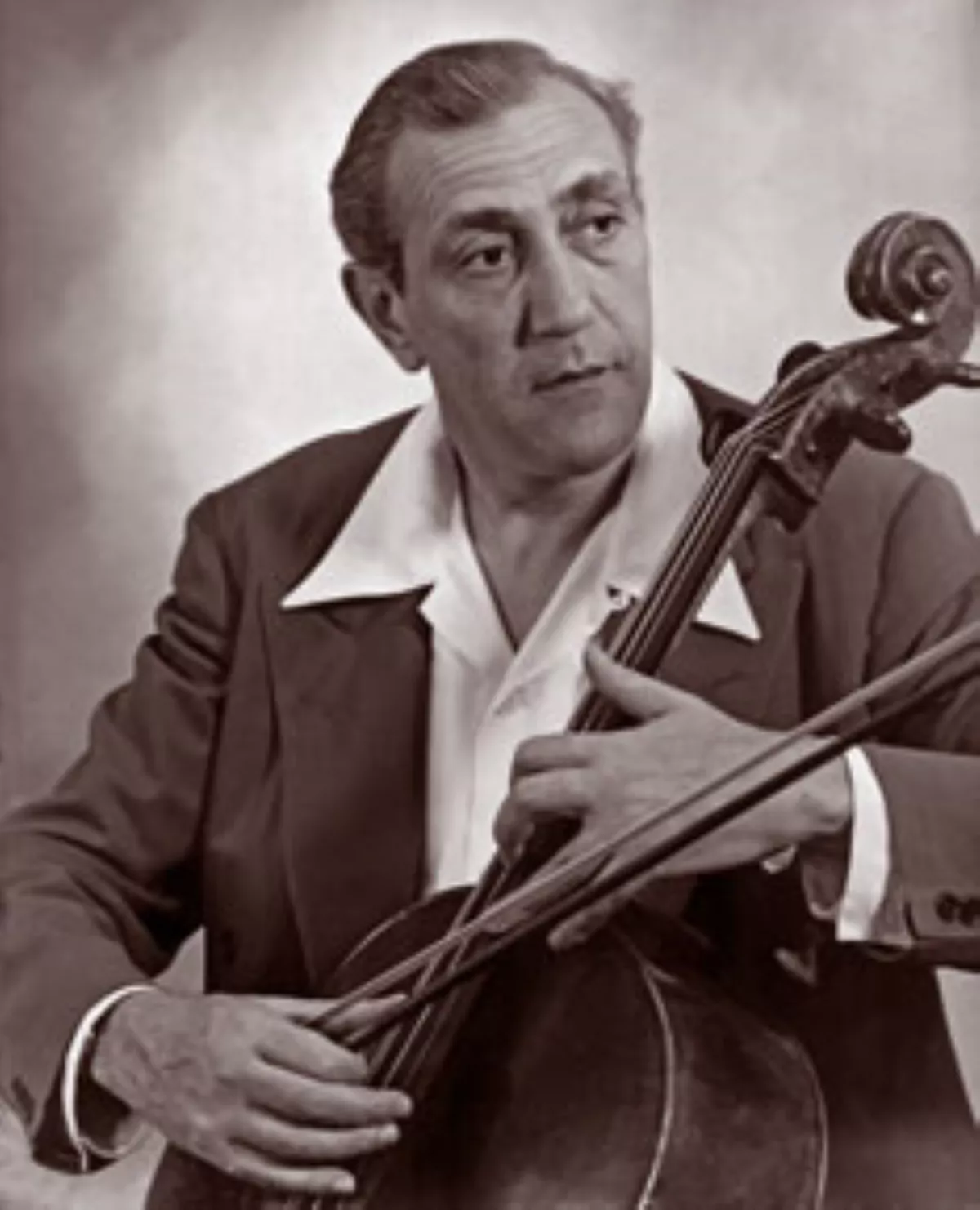 1.
1. Gregor Piatigorsky was born in Ekaterinoslav into a Jewish family.

 1.
1. Gregor Piatigorsky was born in Ekaterinoslav into a Jewish family.
Gregor Piatigorsky won a scholarship to the Moscow Conservatory, studying with Alfred von Glehn, Anatoliy Brandukov, and a certain Gubariov.
Now 18, Gregor Piatigorsky studied briefly in Berlin and Leipzig, with Hugo Becker and Julius Klengel, playing in a trio in a Russian cafe to earn money for food.
Furtwangler heard Gregor Piatigorsky and hired him as the principal cellist of the Berlin Philharmonic.
In January 1937, Gregor Piatigorsky married Jacqueline de Rothschild, daughter of Edouard Alphonse James de Rothschild of the wealthy Rothschild banking family of France.
Gregor Piatigorsky had three grandsons by Jephta and two by Joram.
In 1929, Gregor Piatigorsky first visited the United States, playing with the Philadelphia Orchestra under Leopold Stokowski and the New York Philharmonic under Willem Mengelberg.
From 1941 to 1949, Gregor Piatigorsky was head of the cello department at the Curtis Institute of Music in Philadelphia, and he taught at Tanglewood, Boston University.
Gregor Piatigorsky favored Los Angeles, because many of his friends, such as Rubinstein, Heifetz, and Stravinsky, lived there.
Gregor Piatigorsky taught at the University of Southern California, with which he remained associated until his death.
Gregor Piatigorsky participated in a chamber group with Arthur Rubinstein, William Primrose and Jascha Heifetz.
Gregor Piatigorsky played chamber music privately with Heifetz, Vladimir Horowitz, Leonard Pennario, and Nathan Milstein.
Gregor Piatigorsky performed at Carnegie Hall with Horowitz and Milstein in the 1930s.
Gregor Piatigorsky died of lung cancer at his home in Los Angeles in 1976.
Gregor Piatigorsky was interred in the Westwood Village Memorial Park Cemetery.
Gregor Piatigorsky owned two Stradivarius cellos, the "Batta" and the "Baudiot".
From 1939 to 1951 Gregor Piatigorsky owned the famous 1739 Domenico Montagnana cello known as the "Sleeping Beauty".
Gregor Piatigorsky brought a great authenticity to his understanding of this expression.
Gregor Piatigorsky was able to communicate this authenticity because he had had extensive personal and professional contact with many of the great composers of the day.
Gregor Piatigorsky had a magnificent sound characterized by a distinctive fast and intense vibrato and he was able to execute with consummate articulation all manner of extremely difficult bowings, including a downbow staccato of which other string players could not help but be in awe.
Gregor Piatigorsky often attributed his penchant for drama to his student days when he accepted an engagement playing during the intermissions in recitals by the great Russian basso Feodor Chaliapin.
Denis Brott, a student of Gregor Piatigorsky, identified them as Casals, Hindemith, Garbousova, Morini, Salmond, Szigeti, Menuhin, Milstein, Kreisler, a self-portrait, Cassado, Elman, Bolognini, Heifetz, and Horowitz.
Gregor Piatigorsky's wife, Jacqueline Piatigorsky, was a strong player who played in several US women's championships and represented the US in the women's Chess Olympiad.